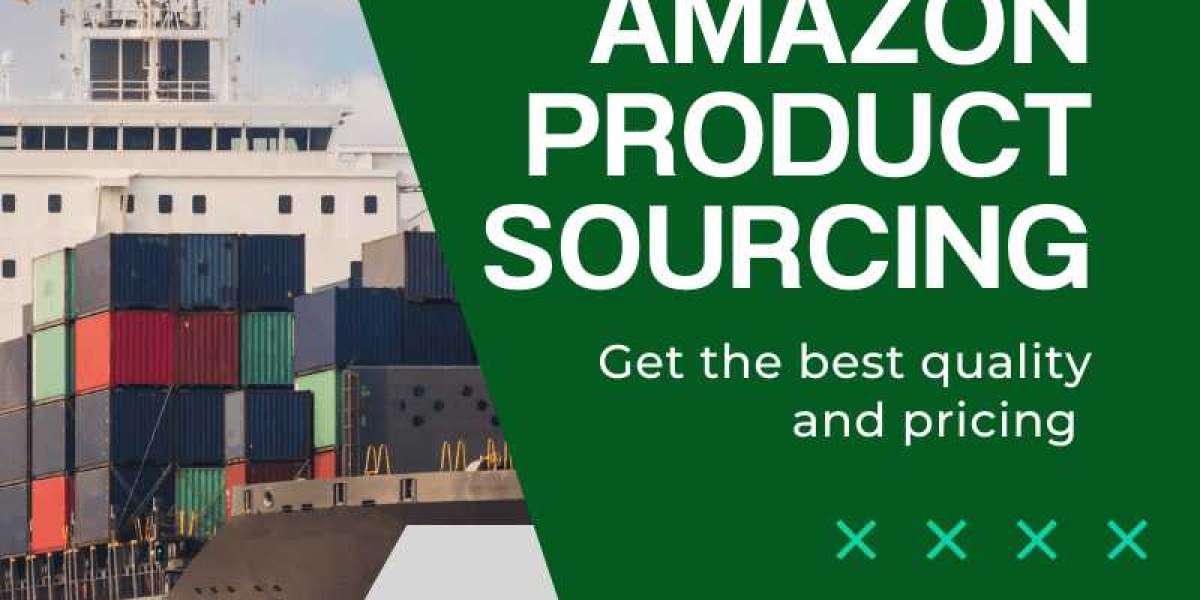Product sourcing is the backbone of any successful e-commerce business. Whether you’re selling on your own website or a platform like Amazon, finding the right products to sell at the right price is crucial. For Amazon sellers, the process of product sourcing involves locating products to sell, purchasing them at a competitive price, and listing them on Amazon's marketplace for profit.
In this article, we’ll dive deep into product sourcing for Amazon, exploring different methods, strategies, and tips for beginners and seasoned sellers alike.
What is Product Sourcing?
Product sourcing refers to the process of finding and obtaining products to sell. For Amazon sellers, it involves identifying products that have demand, sourcing them at a reasonable cost, and then selling them for a profit on the Amazon marketplace. The goal is to find products with high sales potential while maintaining competitive prices to ensure profitability.
Why is Product Sourcing Important?
Good product sourcing is critical because it directly affects your profit margins, inventory turnover, and overall business success. Poorly sourced products can lead to higher costs, lower profits, excess inventory, or even unsellable stock. On the other hand, well-sourced products can help you:
- Maximize profits
- Ensure consistent inventory flow
- Meet customer demand
- Avoid stockouts or overstocking
- Gain a competitive advantage
In essence, sourcing the right products at the right price determines your ability to compete and succeed on Amazon.
Types of Product Sourcing for Amazon Sellers
There are several ways to source products for Amazon. Each method has its own advantages and challenges, and the best option depends on your business model, budget, and goals. Let’s explore the most common methods of Amazon product sourcing.
1. Retail Arbitrage
Retail arbitrage involves buying products from local retail stores at a discount and reselling them on Amazon for a profit. Sellers often find deals during clearance sales, special promotions, or liquidation events. The idea is to capitalize on price differences between retail stores and Amazon.
Pros:
- Low upfront cost
- Easy to start with
- No need for large inventories
Cons:
- Time-consuming
- Inconsistent supply of products
- Lower profit margins
Retail arbitrage is popular among new sellers because it requires minimal investment and allows for quick sales. However, the biggest challenge is scalability, as the availability of products can fluctuate and depend on local retail sales.
2. Online Arbitrage
Online arbitrage is similar to retail arbitrage, but instead of physically going to stores, sellers purchase products from online retailers and resell them on Amazon. It’s a way to source products from the comfort of your home while taking advantage of online deals, discounts, and price mismatches between different platforms.
Pros:
- Can be done from anywhere
- Easier to research and track inventory
- More consistent product availability than retail arbitrage
Cons:
- Competitive landscape
- Lower margins due to shipping costs
- Risk of price drops
Online arbitrage allows for a broader product selection compared to retail arbitrage, but like its counterpart, scaling can be a challenge due to price fluctuations and competition.
3. Wholesale
Wholesale sourcing involves buying products in bulk from manufacturers or distributors at a lower price and reselling them individually on Amazon. Sellers often establish relationships with wholesalers to consistently source products at a discounted rate.
Pros:
- Higher margins
- Consistent inventory supply
- Easier to scale
Cons:
- Requires a larger upfront investment
- Competitive with established sellers
- Requires storage space for bulk orders
Wholesale sourcing is ideal for those looking to scale their Amazon business, as it offers more reliable inventory and better profit margins. However, it can require substantial upfront costs and space to store the products.
4. Private Label
Private label sourcing involves creating your own brand and selling products under that brand name. You work with manufacturers to produce goods and then sell them as a unique product on Amazon. This strategy allows for differentiation from competitors and gives you more control over pricing and branding.
Pros:
- Higher profit margins
- Full control over branding and pricing
- Less competition if done right
Cons:
- Requires significant upfront investment
- Takes time to build a brand
- Greater risk if products don’t sell
Private label sourcing is a great option for sellers who want to establish a long-term, sustainable business. It’s highly scalable and allows for product differentiation, which can reduce price competition. However, the investment in creating and marketing a brand can be substantial.
5. Dropshipping
Dropshipping is a hands-off approach to product sourcing where the seller doesn’t hold inventory. Instead, when a customer purchases an item on Amazon, the order is forwarded to a third-party supplier who ships the product directly to the customer. The seller acts as a middleman between the supplier and the customer.
Pros:
- No need to handle inventory or shipping
- Low upfront costs
- Wide product selection
Cons:
- Lower profit margins
- Less control over inventory and shipping times
- Customer service challenges
Dropshipping is appealing to new sellers because of its low investment and ease of entry. However, the model can be risky due to the reliance on third-party suppliers, and maintaining customer satisfaction can be difficult.
How to Choose the Right Product Sourcing Method
Choosing the right sourcing method depends on your business goals, budget, and level of expertise. Here are some factors to consider when making your decision:
- Budget: Private label and wholesale sourcing typically require a larger upfront investment, while retail and online arbitrage require minimal startup costs.
- Scalability: Wholesale and private label offer more scalability compared to retail or online arbitrage, which may be harder to scale due to limited product availability.
- Risk Tolerance: Private label has higher risks because it involves developing a new brand. Retail arbitrage and dropshipping offer lower-risk alternatives for those just starting out.
- Control: Private label gives sellers more control over their products, branding, and pricing. In contrast, dropshipping gives sellers minimal control over product quality, shipping, and fulfillment.
Tips for Successful Product Sourcing on Amazon
No matter which product sourcing method you choose, here are some general tips to ensure success:
- Conduct Market Research: Use tools like Jungle Scout, Helium 10, or AMZScout to research high-demand products with low competition.
- Focus on Profit Margins: Ensure that your sourcing costs (including shipping, Amazon fees, and other expenses) leave enough room for healthy profits.
- Monitor Inventory Levels: Keep an eye on your stock levels to avoid stockouts or overstocking. Consistent supply is key to maintaining your seller ranking.
- Diversify Your Product Range: Selling a variety of products can reduce risk and help you find profitable niches.
- Stay Compliant: Ensure that your products meet Amazon’s guidelines and safety standards, and comply with legal regulations for sourcing and selling products.
Conclusion
Product sourcing on Amazon is a critical element of running a successful e-commerce business. Whether you’re just starting out or looking to scale your operations, understanding the different sourcing methods—retail arbitrage, online arbitrage, wholesale, private label, and dropshipping—can help you make informed decisions and maximize your profitability. With careful planning, research, and strategy, you can find the best products, source them efficiently, and build a thriving business on Amazon.





